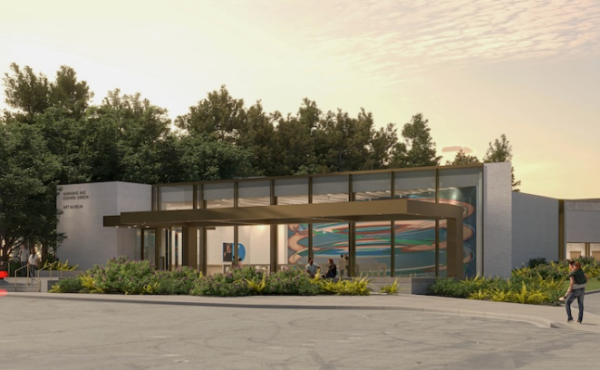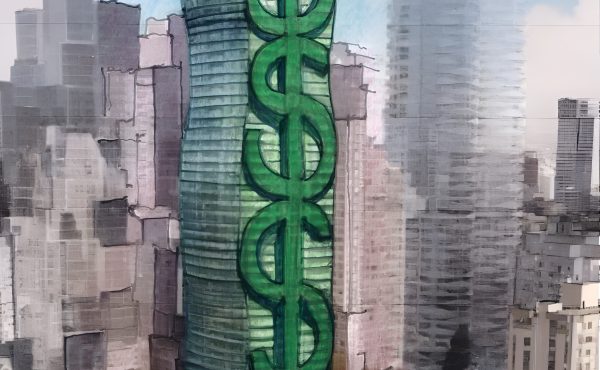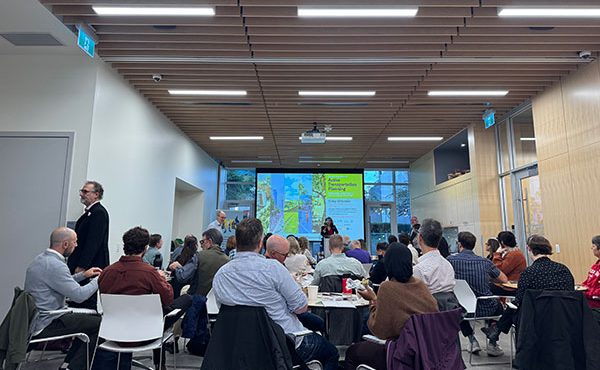
By Sean Ruthen
“Now cracks a noble heart. Good night, sweet Prince…”
Perhaps it is presumptuous to say, but there is an inherent stubbornness in the enterprise of architecture. One need only think of Gary Cooper as Howard Roark in the big screen adaptation of Ayn Rand’s The Fountainhead, standing atop his hard fought modern skyscraper as the credits roll. For it is indeed this heroic spirit of architecture that has enabled the profession to remain relatively intact in its 10,000 year history, and this past November the profession lost one such hero. Jorn Utzon was 90 years old when he shook off this mortal coil, and I’m certain many architects paused for a moment to observe his passing. Perhaps more than any other in the history of the profession (or at least, the ‘immediate present’ as Anthony Vidler recently observed), Mr. Utzon’s opera house represents its great Shakespearean tragedy. All the players were present – the shortsighted government of the day playing Polonious, Alvar Aalto as the ghost of Hamlet’s father, Eero Saarinen as Horatio, and Mr. Utzon as the Dane prince himself. Those who know the story of the opera house and its Danish architect know the real tragedy: that the man died without ever having set foot inside the completed building. As this iconic masterpiece, which identifies Australia as much as the city in which it resides, continues to inspire those of us who would rise to the call of the profession, I myself have felt compelled to sing a lament for Mr. Utzon, and in particular, his experience of realizing this one masterful project.
Having had the good fortune to visit his building on two separate occasions – first on a guided tour in 1999, and seven years later as a user partaking of Mozart’s Le Nozze di Figaro – I have been able to compare the two experiences of this great building and its site, set in one of the most fantastic cities in the ‘New World’. I put this in quotes of course because everyone knows the story of Australia’s less than glamorous beginnings, though arguably no worse than some ‘moments’ during the colonization of North America. Further to this, on my more recent visit down under I not only visited Sydney but Melbourne as well, and got to see an urban rivalry much like that between LA and NY in America, or Toronto and Vancouver a little closer to home. Melbourne has most recently responded to its ‘opera house complex’ with an impressive architectural complex known as Federation Square. The output of LAB Architecture, its bits of camouflage-like cladding and a fracturing glass theater (predecessor to the Water Cube at Beijing’s Olympic Games), combine with its massive open square to give the city an architectural expression which is at least in scale if not character to Mr. Utzon’s opera house. And the cultural pride which both cities display on their Federation Day, itself a curious amalgam of the celebrations of American independence and Canadian confederation, inevitably grounds itself within each city’s grandest architectural statement. In Sydney, this is equally apparent in its New Year’s celebration (which happens in the same month as their Federation Day), when a half million people throng to the monumental plaza around the opera house to watch one of the world’s most extraordinary displays of fireworks.

But from an architectural standpoint, what is most important (and often forgotten) is how the opera house is a monument to the shortsightedness of civic, provincial, and federal bureaucrats, as well as the populist machines that support them. To this day the narrow mindedness that was displayed by Minister David Hughes and the Askin government would have most believe that architecture is a vanity that does little to enrich the public realm and therefore is not worth the expense. There is a whiff of this in our province’s decision to have the key Vancouver Olympic venues awarded only to local firms, with not a single one open to an international architect, perhaps out of fear that they, like Mr. Utzon’s opera house, would result in huge budget overruns. The irony of course is that the provincial government is presently playing patron to a building whose final cost will make Mr. Utzon’s building look like a marked down price at Wal-Mart, as the provincial taxpayers hold their breath at what the final cost of our new trade and convention centre will be (a building which we should remind ourselves is not even for us but for visitors to our city). Perhaps these same politicians would have a better argument if the resources they claim should not be used to finance such architectural extravagance were being used more effectively on our hospitals, our school systems, and our infrastructures. If there is then any symbol which more decries the folly of politicians and journalists alike, it is Mr. Utzon’s creation, as both these schools of sophistry vehemently predicted in the 1960’s that the building would be a dismal failure as both a functioning opera house and a conduit for culture. History has not been kind to the naysayers, with the integrity of the architect emergent as the hero. And while the story of this architect itself remains a rueful tragedy, the profession is richer for his heroism, with one country at least being the happy benefactor of his vision.

Given then this predilection of our civil servants to value engineer the architecture out of our civic environments, one may very well ask how it is possible that the Sydney Opera House exists at all? One need look no further than to the architect himself for the answer. Born in Copenhagen in 1918, the young Jorn would have been both at once influenced by his father, a naval architect, and his father’s cousin who was a sculptor and professor at Copenhagen’s Royal Academy of Fine Arts. Graduating from this same university himself in 1942, he worked for various architects, including a year in the office of Finnish architect Alvar Aalto, before establishing his own design practice at the now almost unthinkable age of 31. This young age would be partly his undoing after receiving the opera house commission, as some government officials would argue that at 38 he was far too young to take on such a challenging program. But perhaps not so unthinkable when one understands how at such an early age Jorn would have no doubt been watching as his father drew up the plans and sections of the watercrafts he would help realize, with the young apprentice most likely having a hand in creating the numerous models and plans for their construction.
Looking through a Swedish architecture magazine in 1956, the design competition for the opera house in far off Australia would have not seemed unlike many others that a young fledgling architecture firm like Mr. Utzon’s would enter, with the marked exception that he won it. It is said that 933 architects registered for the competition, with 230 submitting completed designs. The task then to choose a winning entry would have been monumental, as much as the building which was to be the resultant. Whether or not the story is true that Finnish architect Eero Saarineen, a member of the design jury, picked Mr. Utzon’s design from a pile of rejections is beside the point; the decision was unanimous, though they noted there would be problems:
“[Utzon’s] drawings submitted for this scheme are simple to the point of being diagrammatic. Nevertheless, as we have returned again and again to these drawings, we are convinced that they present a concept for an Opera House which is capable of becoming one of the great buildings of the world. We consider this scheme to be the most original and creative submission. Because of its very originality it is clearly a controversial design. We are, however, absolutely convinced about its merits…” *

Philip Drew’s Phaidon publication Sydney Opera House, which I acquired in the gift shop while on my first visit, elaborates on the Opera House’s controversy, pointing out that the NSW government still got the building for a bargain at $102 million, and of that sum, Mr. Utzon’s work only represented $18 million (his last estimate for the final project had been $60 million) – staggering when you think the design had been completed and the concrete form engineered (with the also fledgling Arup) and built by the time Mr. Utzon was forced to pack up his family and move off the continent.
Before even arriving in Sydney in 1959, he had been working on the project for five years in his office in Copenhagen. When he was replaced in 1966, he had no choice but to leave the country, as there surely would have been no other work on his desk to tend to. It was an instance of cruel and unjust treatment by a client. The client, as it would turn out, was corrupt, and involved in major vice trades, the worst in the country’s history. Mr. Drew points out that the architect was the innocent victim of a political coup, as the new prime minister and party would usurp the then longstanding Labour party, and replace Mr. Utzon with their own team of architects. For them it would take seven more years to finish the building, butchering the beautiful interiors that the architect had designed on the way. I myself marveled my last time there how remarkable it would’ve been to have had a connection with the harbour outside the building while sitting in the opera hall, as Mr. Utzon had originally designed the interior halls to be glazed.
As I was told while on my initial tour of the building, the architect’s daughter wept when she saw the inside, though not I think in the way the late Philip Johnson is said to have wept when he stepped into Frank Gehry’s Guggenheim in Bilbao. As may have been expected, Mr. Utzon’s career would never quite recover, as at the time the politicians, who had made a PR spectacle out of him, managed to turn the popular press of New South Wales, as well as that of Copenhagen, against him. It in effect stunted what should have been an otherwise brilliant career. Mr. Drew points out that a competition entry for another concert hall while working on the Sydney Opera House placed third after Alvar Aalto and Hans Scharoun, and of the other projects he realized his Bagsvaerd Church in Copenhagen (1976) and his Kuwait National Assembly (1979-81) are exemplary.
Rightly so, the building and the architect are being given their proper due. The Sydney government has made reparations, beginning with the Labour party’s relelection in 1978, which helped to realize the infrastructure the finished facility desperately needed – a parkade and proper forecourt, along with the refurbishment of the entire Circular Quay – creating the proper visual stations approaching the building from which to see it in all its wonder. And in 1999, Mr. Utzon was commissioned remotely from Mallorca to realize his interiors, along with his son Jan (also an architect). Perhaps his greatest honour though would have been receiving the Pritzker Prize in 2003 before his architectural peers, an apology from not just the government but his own profession for allowing this to happen to him.
The bumpy history of government involvement in architecture is a long one, especially when the architecture itself is aspiring to something like greatness (or at the least, above the status quo). Elected officials are there to ensure our rights and freedoms are maintained in our immediate environments, hence why they are expected to live in the area they represent. They are witnessing first hand whether they have roads built to where they need to go, schools for their children, hospitals close by and functioning properly – all as we, the people who have elected them, likewise need to ensure a healthy forum for intelligent thought where we can comprehend our freedoms. Understandably then, much of our tax dollars goes to the support of this infrastructure, while those moments that truly make life richer – the amenity – is more often than not what is left on the floor in a pile of cost saving trimmings. In Metro Vancouver we may very well ask ourselves whether the Winter Olympics is such an amenity, or something which we merely need right here, right now? Much of government money understandably goes to the right here, right now – we have schools and parks, hospitals and a healthcare system among the envy of the world (at least for now). But a building like the opera house continues to elude us, though there have been many attempts.
While I am not the first to admit that the relationship between architecture and politics is at best tenacious, especially when seen through the tragedy of Mr. Utzon’s commission, public money used by politicians for architecture has never been an easy pill to swallow for the public, especially in times of economic decline. Mr. Drew points out how little an opera house in far off Sydney would have meant to a struggling NSW farmer. The story of the opera house is then a combination of circumstances that led towards their extremes – the jury picking something that was obviously great but equally as difficult to realize, a young architect with a mammoth project, a civic government’s strict stipulations for its city, and a country whose government changed leadership and perspective midstream. All combined to give Sydney ‘one of the greatest buildings of the world’, but to the utter detriment of the career of the architect himself.
Before passing away, Mr. Utzon would have been aware of the architectural legacy his challenging building had given to its country down under. Undoubtedly, it would be hard for the same NSW farmer now to imagine a symbol of Australia that was not the opera house. As for Jorn, he himself said to his peers while accepting the Pritzker that he need only close his eyes to see the inside of the great building. Perhaps one day, long after a second squabbling of money to realize the new interiors, the building will finally be finished, matching that vision that the master builder saw when he closed his eyes.
* From Sydney Opera House, by Philip Drew, Phaidon Press Ltd, 1995.
***
Sean Ruthen is former intern architect representative to the AIBC Council, and presently intern representative to the RAIC Chapter in BC. A graduate of UBC’s School of Architecture, he is presently employed at the office of IBI/HB Architects while studying for his registration exams and finding the time to write for re:place.



